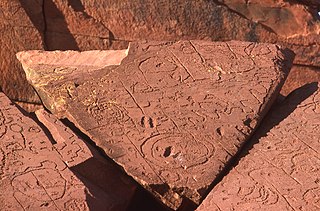
The Arrernte land is aboriginal land in central Australia. It is controlled by Arrernte Council which in turn is controlled by Central Land Council from Alice Springs.

The Arrernte land is aboriginal land in central Australia. It is controlled by Arrernte Council which in turn is controlled by Central Land Council from Alice Springs.
Arrernte is the traditional language of Alice Springs, which is the centre of Arrernte land.
Arrernte land claims run as far west as Mutitjulu and King's Canyon, and as far east as the western edge of the Simpson Desert. Arrernte does control a small amount of land north of Alice Springs, there are many communities on this land, including but not limited to Sandy Bore Outstation, Black Tank, Corkwood, Snake Well, Gillen Bore, Burt Creek, 7 Mile, and many more. The recognised Family's include but not limited include: Turner, Ferber, Lynch, Stephens, Gorey, McMillan, Rice, and many others intermarried family's.
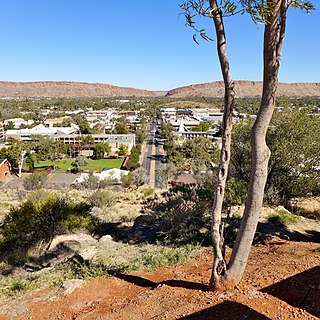
Alice Springs is a town in the Northern Territory, Australia; the third largest settlement after Darwin and Palmerston. The name Alice Springs was given by surveyor William Whitfield Mills after Alice, Lady Todd, wife of the telegraph pioneer Sir Charles Todd. Known colloquially as "The Alice" or simply "Alice", the town is situated roughly in Australia's geographic centre. It is nearly equidistant from Adelaide and Darwin.

Albert Namatjira was an Arrernte painter from the MacDonnell Ranges in Central Australia, widely considered one of the most notable Australian artists. As a pioneer of contemporary Indigenous Australian art, he was arguably one of the most famous Indigenous Australians of his generation. He was the first Aboriginal artist to receive popularity from a wide Australian audience.

The Todd River is an ephemeral river in the southern Northern Territory, central Australia. The origins of the Todd River are in the MacDonnell Ranges, where it flows past the Telegraph Station, almost through the centre of Alice Springs (Mparntwe), through Heavitree Gap at the southern end of Alice Springs and continuing on for some distance, passing through the western part of the Simpson Desert, as it becomes a tributary of the Hale River, and eventually flowing into Lake Eyre in South Australia.

Jay Creek is in the MacDonnell Ranges 45 kilometres (28 mi) west of Alice Springs in the Northern Territory in Australia. It was a government reserve for Aboriginal Australians which for a time in the late 1920s and early 1930s included 45 children from a home named "The Bungalow"(37 of whom were under the age of 12) temporarily housed in a corrugated iron shed with a superintendent and matron housed separately in two tents.
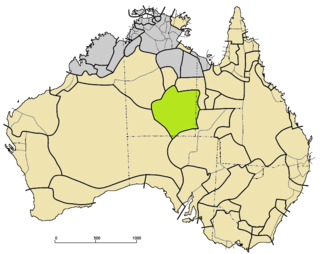
Arrernte or Aranda, or sometimes referred to as Upper Arrernte, is a dialect cluster in the Arandic language group spoken in parts of the Northern Territory, Australia, by the Arrernte people. Other spelling variations are Arunta or Arrarnta, and all of the dialects have multiple other names.

The Arrerntepeople, sometimes referred to as the Aranda, Arunta or Arrarnta, are a group of Aboriginal Australian peoples who live in the Arrernte lands, at Mparntwe and surrounding areas of the Central Australia region of the Northern Territory. Many still speak one of the various Arrernte dialects. Some Arrernte live in other areas far from their homeland, including the major Australian cities and overseas.
The Strehlow Research Centre is a museum and cultural centre within the Museum of Central Australia, which is situated in the Araluen Cultural Precinct in the town of Alice Springs in the Northern Territory of Australia.

Arandic is a family of Australian Aboriginal languages consisting of several languages or dialect clusters, including the Arrernte group, Lower Arrernte, Pertame language and Kaytetye.
Arrernte is a descriptor related to a group of Aboriginal Australian peoples from Central Australia.
The Anmatyerr, also spelt Anmatyerre, Anmatjera, Anmatjirra, Amatjere and other variations) are an Aboriginal Australian people of the Northern Territory, who speak one of the Upper Arrernte languages.
Narwietooma Station, most commonly known as Narwietooma, is a pastoral lease that operates as a cattle station in the Northern Territory of Australia. It is on the traditional lands of the Western Arrernte and Anmatyerr people who are the recognised Native Title holders of large sections of land that make up the station.

Veronica Perrule Dobson is an Eastern Arrernte linguist, educator, elder, Traditional Owner, author and ecologist. She is instrumental in establishing Eastern Arrernte as a written language.

Hann Range is a mountain range in the Northern Territory of Australia located in central Australia approximately 120 kilometres (75 mi) north of Alice Springs.
Braitling is a suburb of the town of Alice Springs in the Northern Territory, Australia. It is on the traditional Country of the Arrernte people.

The Alice Springs Telegraph Station is located within the Alice Springs Telegraph Station Historical Reserve, four kilometres north of the Alice Springs town centre in the Northern Territory of Australia. Established in 1872 to relay messages between Darwin and Adelaide, it is the original site of the first European settlement in central Australia. It was one of twelve stations along the Overland Telegraph Line.
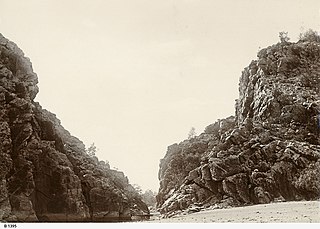
Emily Gap / Anthwerrke is a natural attraction and significant cultural site to the Arrernte peoplein the East MacDonnell Ranges, eight kilometres to the east of Mparntwe/Alice Springs, in Australia's Northern Territory. Various sections of the Gap include Aboriginal rock art.
Margaret Heffernan, is a Central Arrernte linguist, author, interpreter and translator who is now a well respected elder in her community. Heffernan is responsible for developing the orthography of Arrernte.
The Charles River, which is often called Charles Creek is an ephemeral stream in the southern Northern Territory. It is a tributary of the Todd River and, like the Todd River, its naming is associated with Charles Todd; a senior civil servant involved with the Overland Telegraph Line.
Little Flower Mission operated from 1938 to 1942 and it was a mission to Eastern Arrernte people who were living in and around the township of Alice Springs. The mission was established by Catholic missionaries, part of the Missionaries of the Sacred Heart order.
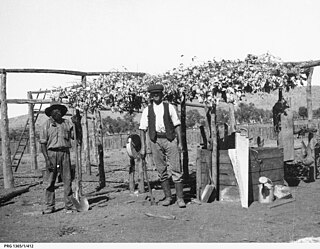
Ernest Eugene Kramer (10 May 1889 – 16 February 1958) was a non-denominational itinerant missionary who worked in Central Australia, mostly Alice Springs, from 1913 until 1934 who is known for his camel train caravan mission. Kramer was responsible for building the first church in Alice Springs, the Ebenezer Tabernacle.
23°42′0″S133°52′12″E / 23.70000°S 133.87000°E